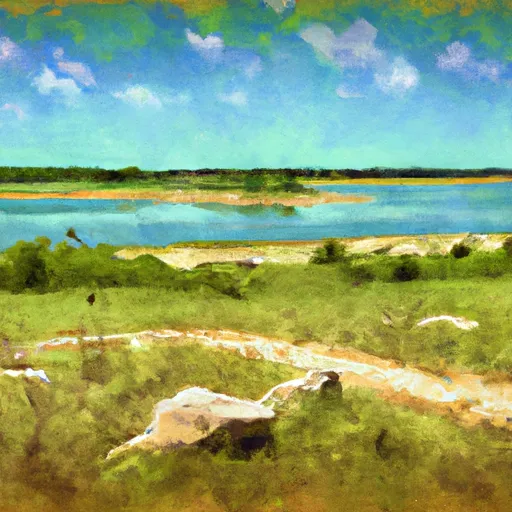Summary
The refuge contains 18,463 acres of grasslands, wetlands, and woodlands, and is home to a diverse range of plant and animal species.
One of the main reasons to visit Flint Hills National Wildlife Refuge is to see the unique ecosystem of the tallgrass prairie, which is one of the most endangered ecosystems in the world. Visitors can explore the prairie through hiking trails, wildlife viewing areas, and guided tours.
Some of the specific points of interest to see at the refuge include the Quivira Wetland Complex, which is a critical stopover for migratory birds, and the Flint Hills Discovery Center, which offers educational exhibits on the history and ecology of the area.
Interesting facts about Flint Hills National Wildlife Refuge include that it was established in 1966 as a habitat for migratory waterfowl and that it is managed by the U.S. Fish and Wildlife Service. The area has also been designated as a Globally Important Bird Area by the American Bird Conservancy.
The best time of year to visit Flint Hills National Wildlife Refuge is in the spring and fall, when migratory birds are passing through and the weather is mild. However, visitors can enjoy the refuge year-round, with activities such as fishing, hunting, and wildlife watching available in every season.
Weather Forecast
Park & Land Designation Reference
Large protected natural areas managed by the federal government to preserve significant landscapes, ecosystems, and cultural resources; recreation is allowed but conservation is the priority.
State Park
Public natural or recreational areas managed by a state government, typically smaller than national parks and focused on regional natural features, recreation, and education.
Local Park
Community-level parks managed by cities or counties, emphasizing recreation, playgrounds, sports, and green space close to populated areas.
Wilderness Area
The highest level of land protection in the U.S.; designated areas where nature is left essentially untouched, with no roads, structures, or motorized access permitted.
National Recreation Area
Areas set aside primarily for outdoor recreation (boating, hiking, fishing), often around reservoirs, rivers, or scenic landscapes; may allow more development.
National Conservation Area (BLM)
BLM-managed areas with special ecological, cultural, or scientific value; more protection than typical BLM land but less strict than Wilderness Areas.
State Forest
State-managed forests focused on habitat, watershed, recreation, and sustainable timber harvest.
National Forest
Federally managed lands focused on multiple use—recreation, wildlife habitat, watershed protection, and resource extraction (like timber)—unlike the stricter protections of national parks.
Wilderness
A protected area set aside to conserve specific resources—such as wildlife, habitats, or scientific features—with regulations varying widely depending on the managing agency and purpose.
Bureau of Land Management (BLM) Land
Vast federal lands managed for mixed use—recreation, grazing, mining, conservation—with fewer restrictions than national parks or forests.
Related References

 Hickory Creek West - John Redmond Reservoir
Hickory Creek West - John Redmond Reservoir
 West Wingwall - John Redmond Reservoir
West Wingwall - John Redmond Reservoir
 Hickory Creek East - John Redmond Reservoir
Hickory Creek East - John Redmond Reservoir
 Redmond Cove North - John Redmond Reservoir
Redmond Cove North - John Redmond Reservoir
 Redmond Cove South - John Redmond Reservoir
Redmond Cove South - John Redmond Reservoir
 Dam Site Area - John Redmond Reservoir
Dam Site Area - John Redmond Reservoir